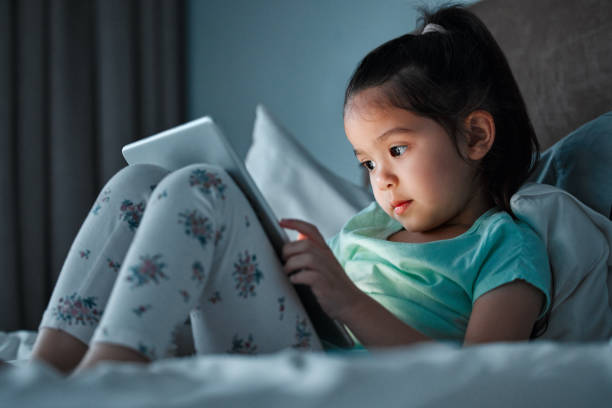Did you know that excessive screen usage in children is associated with lower academic performance and increased behavioral disorders, according to an American Academy of Pediatrics study? Common Sense Media found that children aged 8 to 12 in the United States spend an average of 4 hours and 44 minutes per day on screen media. Furthermore, a study published in JAMA Pediatrics discovered that children who spend more than two hours per day on screens are more likely to display symptoms of worry and despair.
These findings emphasize the necessity of knowing and managing screen time so that it has a beneficial impact on our children’s life. Consulted with Dr. Jain Neha Rajkumar, Consultant – Pediatrics and Neonatology, Sarjapur, Bangalore, discussed good and unhealthy screen time, suitable time limits, and how to avoid excessive digital usage in children.
How Much Screen Time is too Much Screen Time?
Screen time includes activities ranging from educational and prosocial, such as schoolwork, socializing with friends and family, and creating art or music, to purely recreational or even potentially harmful, such as watching inappropriate TV shows, visiting unsafe websites, or playing violent video games. Understanding the difference between positive (healthy) and negative (unhealthy) screen time is critical for dealing with its effects on our lives.
Screen time should be avoided for children under the age of two, with the exception of occasional video chats to family. Screen usage for children aged 2 to 5 years should be limited to one hour per day, preferably less. For older children and adolescents, any screen time that disturbs physical exercise, sleep, homework, meals, hobbies, or family time is deemed excessive and should be curtailed.
Excessive Screen Time Side Effects?
Excessive screen time can have a negative impact on one’s physical, emotional, social, and academic well-being. Physically, it can lead to obesity, sedentary lifestyles, poor sleep, migraines, eye strain, and neck, back, and wrist difficulties. Mental symptoms may include delayed speech, hyperactivity, anger, violence, a drive for rapid satisfaction, poor attention, FOMO (fear of missing out), FOBLO (fear of being left out), cyberbullying, media addiction, distorted body image, drug use, self-harm, anxiety, and despair. Excessive screen usage can lead to decreased socializing and increased social anxiety. It can have a negative impact on academic performance.
5 Ways to Reduce Screen Time in Kids
Creating “Digital Rules” makes children feel more safe by creating boundaries and norms for behavior. To encourage healthy media use, provide a warm, loving environment in which children are guided respectfully and empathetically, and avoid using screens to quiet or distract them.
- Balance screen time with adequate periods for sleep, physical activity, study, family interactions, meals, and hobbies, and avoid screen use at least one hour before bedtime to prevent sleep disturbances caused by blue light.
- Follow the 20-20-20 rule to reduce eye strain: every 20 minutes, take a 20-second break to look at something 20 feet away.
- Encourage children to avoid multitasking by turning off all digital devices while doing offline homework.
- Monitor online content and interactions by co-viewing and supervising what children are exposed to, avoiding violent content, and ensuring proper privacy settings, safe search engines, and antivirus software. Promote educational media use, physical activity, and offline creative games, using media moments to convey family values and interpret media messages.
- Designate digital-free zones such as bedrooms, dining tables, kitchens, bathrooms, and motorized vehicles, and implement digital fasting times for family bonding. Finally, model healthy media use by practicing good habits yourself and creating a family media usage plan.
By following these rules and being aware of the influence of screen time, parents may help their children have a healthier relationship with digital media, encouraging their general well-being and success.







 Finance
Finance







